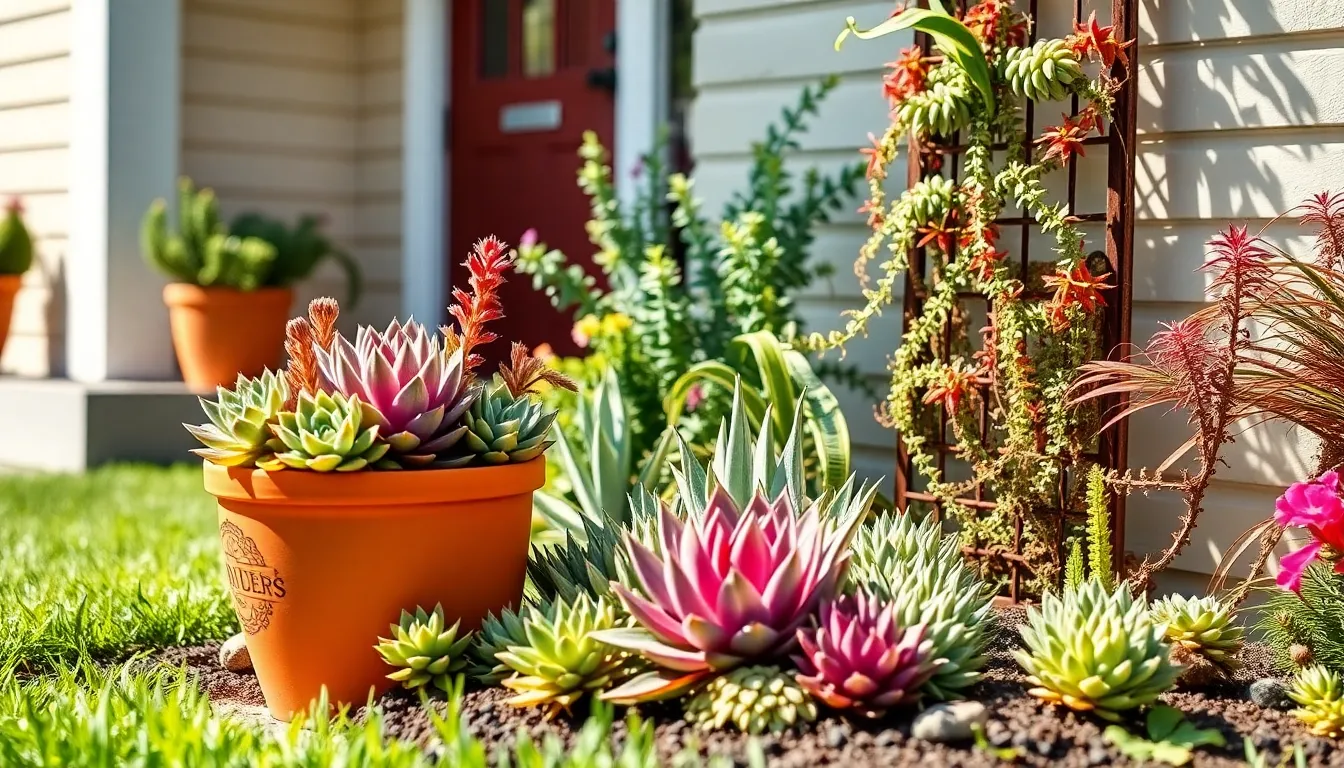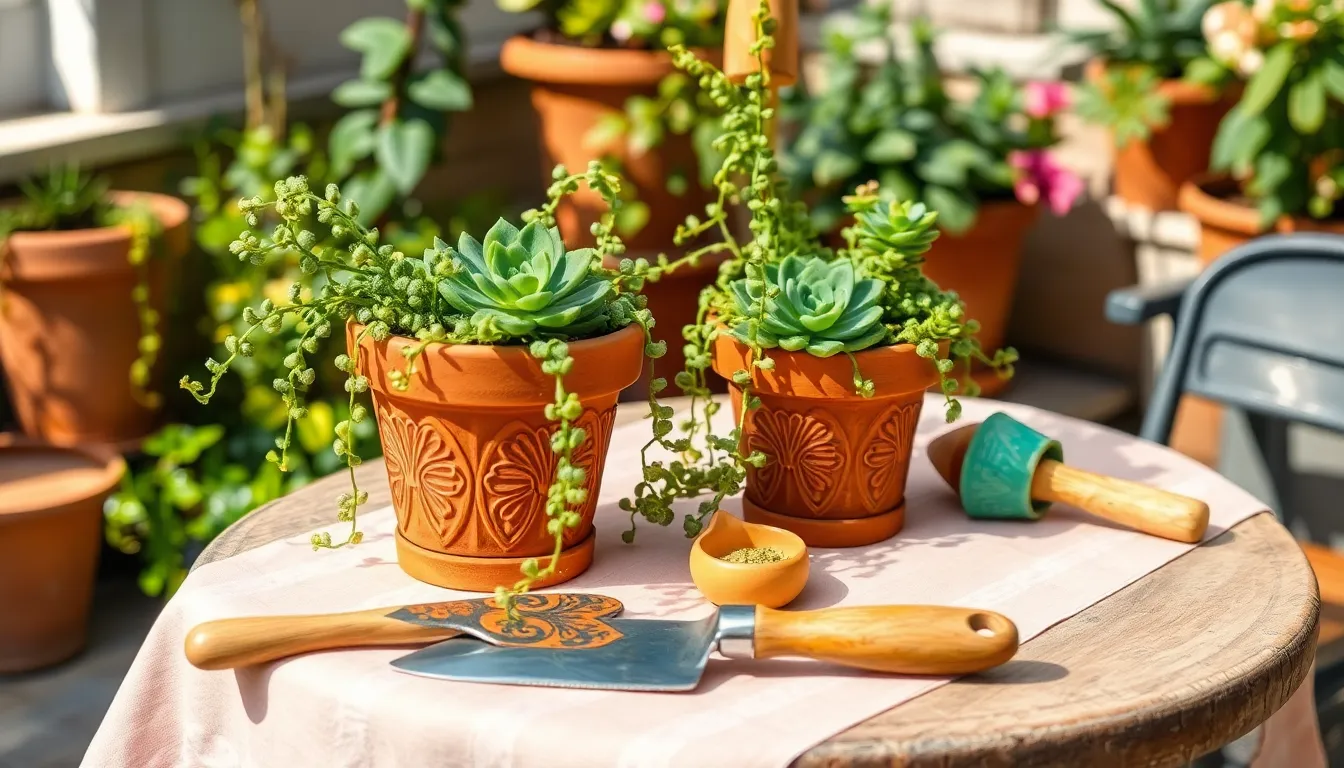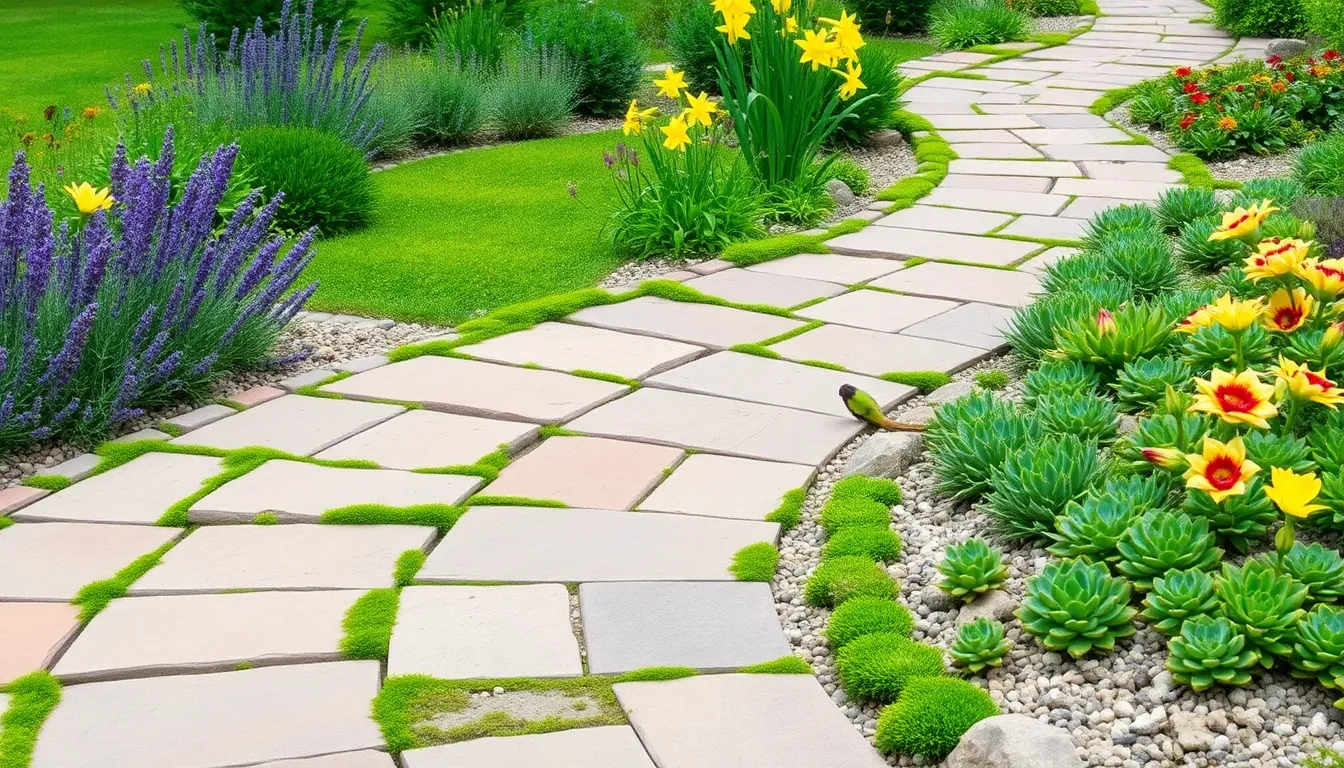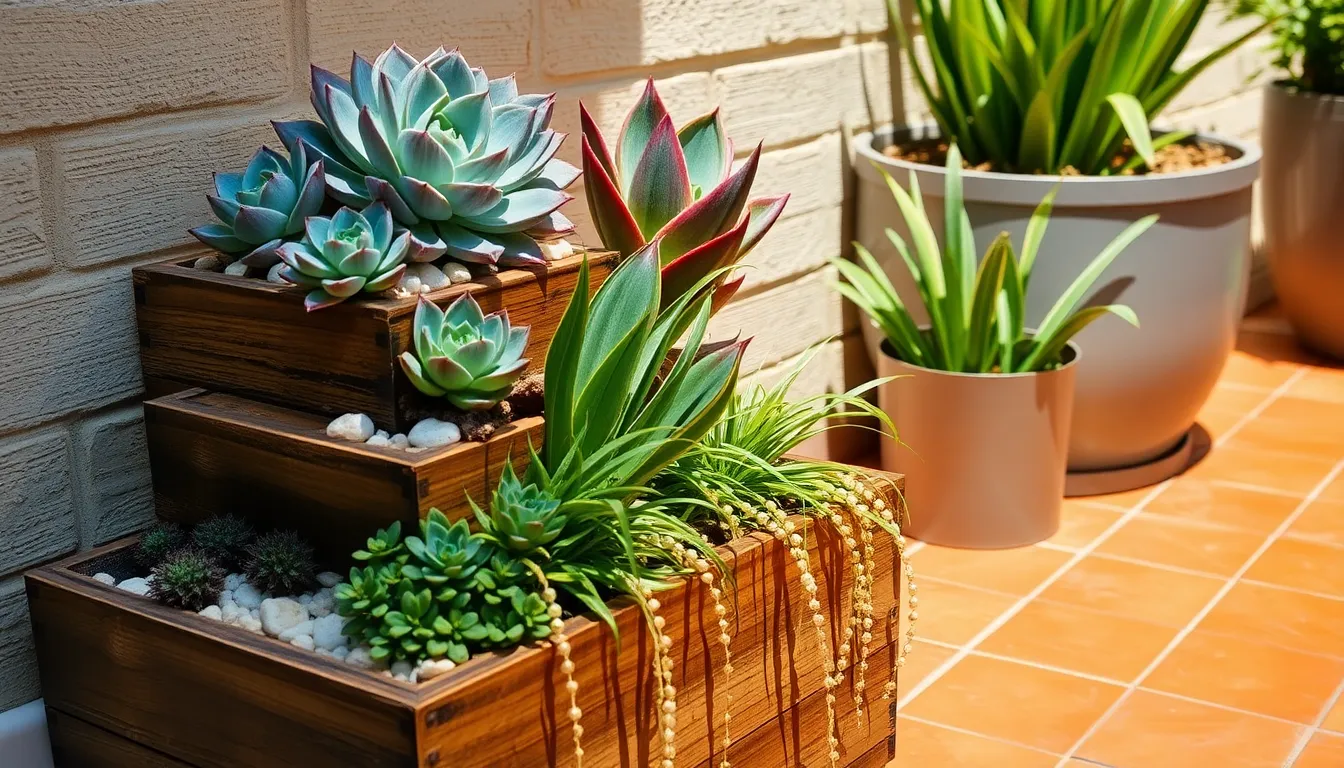Transforming a small front yard into a lush, welcoming oasis is a delightful endeavor that any gardener, from novice to expert, can relish. “10 Small-Space Front Yard Landscaping Ideas” serves as your roadmap to cultivating charm and functionality in the most compact of spaces, all while ensuring that your green thumb shines brightly.
Whether you’re just starting on your gardening journey or have years of experience under your belt, this guide offers a treasure trove of practical insights. You’ll discover how the right plant selections and clever design techniques can maximize your space, bringing both aesthetic and practical rewards to your doorstep.
Imagine stepping outside to a vibrant, personalized landscape that not only enhances curb appeal but also boosts your sense of accomplishment. By the time you’ve explored these ideas, you’ll be equipped with the confidence and knowledge to make your front yard a stunning showcase of your gardening prowess.
Choose Vertical Planters Wisely
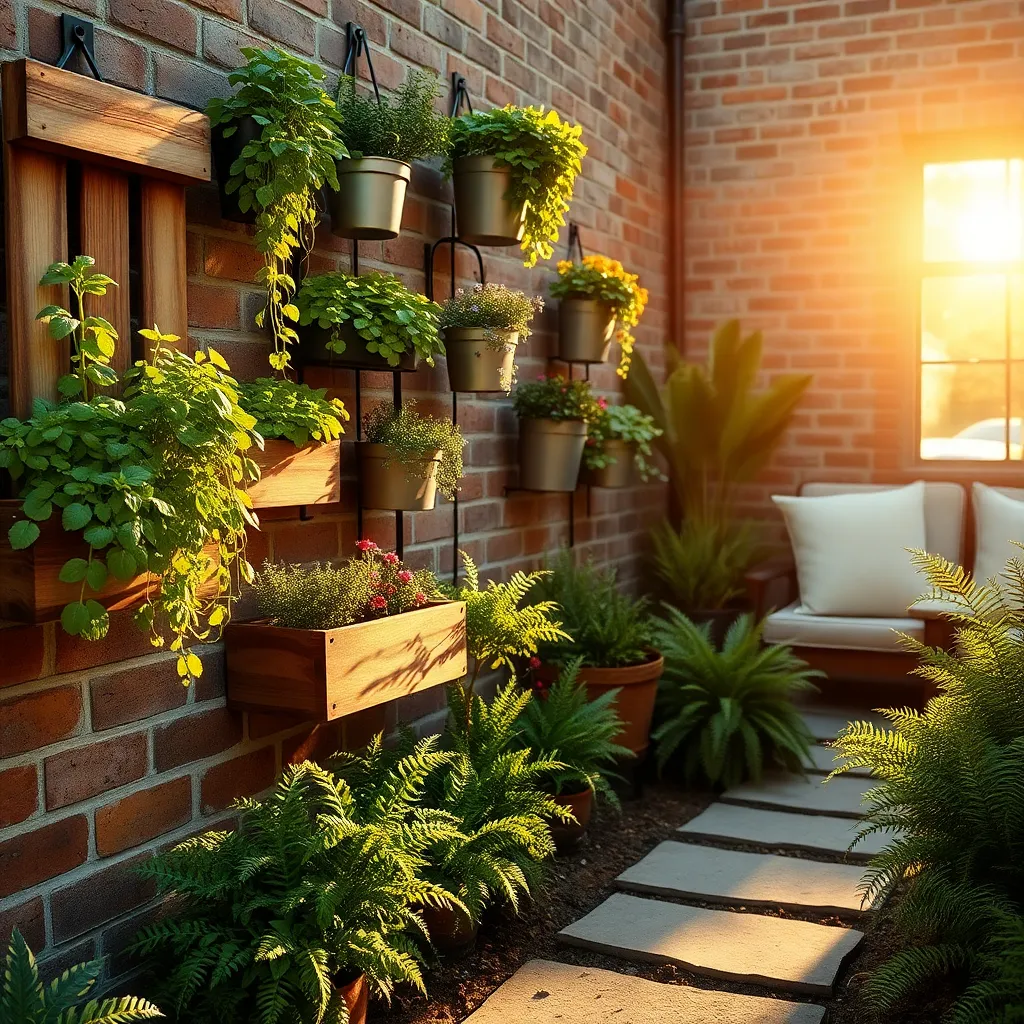
Vertical planters are a fantastic way to maximize space in a small front yard. When selecting your planters, consider the material and durability to ensure they withstand weather conditions in your area.
It’s crucial to choose plants that thrive in the vertical environment, such as succulents, herbs, and trailing vines. These plants not only save space but also add a lush, green aesthetic to your front yard.
Ensure the planter provides adequate drainage to prevent waterlogging, which can harm plant roots. A simple solution is to line the bottom of the planter with small stones or gravel before adding soil.
For beginners, start with easy-to-grow plants like pothos or ferns, which require minimal maintenance. More experienced gardeners might experiment with a mix of flowering plants to create a vibrant display throughout the seasons.
Incorporate Multi-Level Planting

Incorporating multi-level planting into your small-space front yard can create a dynamic and lush appearance. Begin with layering plants of varying heights to maximize space and visual interest. Tall plants, such as ornamental grasses or small trees like dwarf Japanese maple, can form the backdrop for your design. These can be complemented by mid-height shrubs such as lavender or hydrangeas, which add volume and color.
For the intermediate layer, consider using perennials like hostas or daylilies that thrive in partial shade. These plants not only provide a burst of color but also contrast beautifully with taller plants, creating depth. In the foreground, choose low-growing ground covers, such as creeping thyme or sedum, which can fill in gaps and suppress weeds. This combination ensures a full, vibrant appearance throughout the growing season.
When arranging these layers, pay attention to the specific sunlight and soil requirements of each plant. Ensure that each plant receives the right amount of light and water by strategically positioning them according to their needs. For those looking to add a sophisticated touch, consider incorporating container plants on steps or raised beds. These containers can be moved and rearranged to refresh the look of your garden easily.
Advanced gardeners might experiment with seasonal rotations to keep the landscape interesting all year round. For instance, replace summer bloomers with fall-friendly chrysanthemums or pansies as temperatures drop. Such rotations can provide continuous visual interest and make the most of your small space. Whether you’re a beginner or an experienced gardener, multi-level planting offers a rewarding way to enhance your front yard’s appeal.
Utilize Space-Saving Furniture
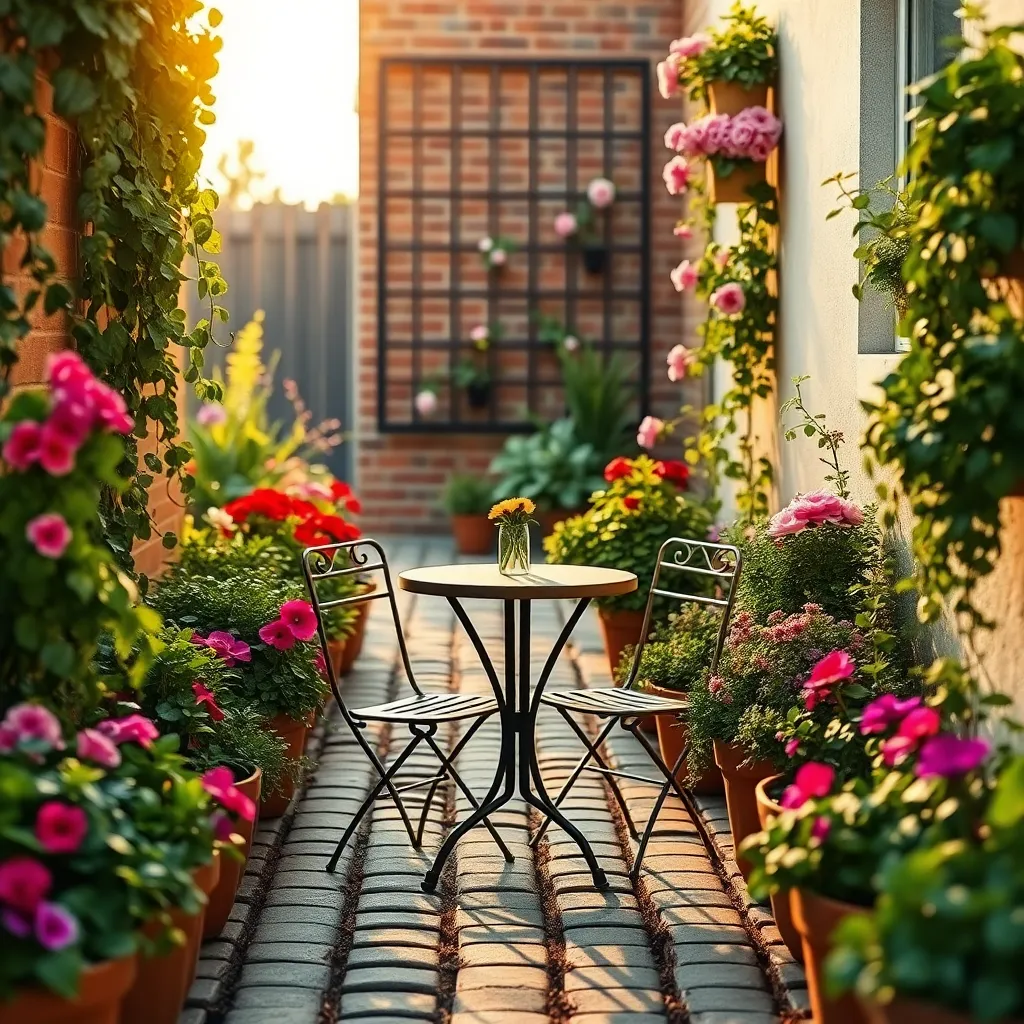
Utilizing space-saving furniture can significantly enhance the functionality of a small front yard without compromising aesthetics. Consider adding **foldable chairs and tables** that can be easily stored when not in use to maximize available space for plant growth.
Opt for **vertical garden furniture** like wall-mounted shelves or ladder plant stands that allow you to display plants while freeing up ground area. This setup not only creates a lush visual appeal but also provides easy access for watering and maintenance.
For those who love to entertain, choose benches with built-in planters that serve dual purposes. **These multi-functional pieces** provide seating while integrating seamlessly with your garden’s plant life.
When selecting materials, go for weather-resistant options such as **teak, cedar, or powder-coated metal** to ensure longevity. Regularly inspect and treat wooden furniture with protective oil to maintain its durability against the elements.
Select Low-Maintenance Shrubs
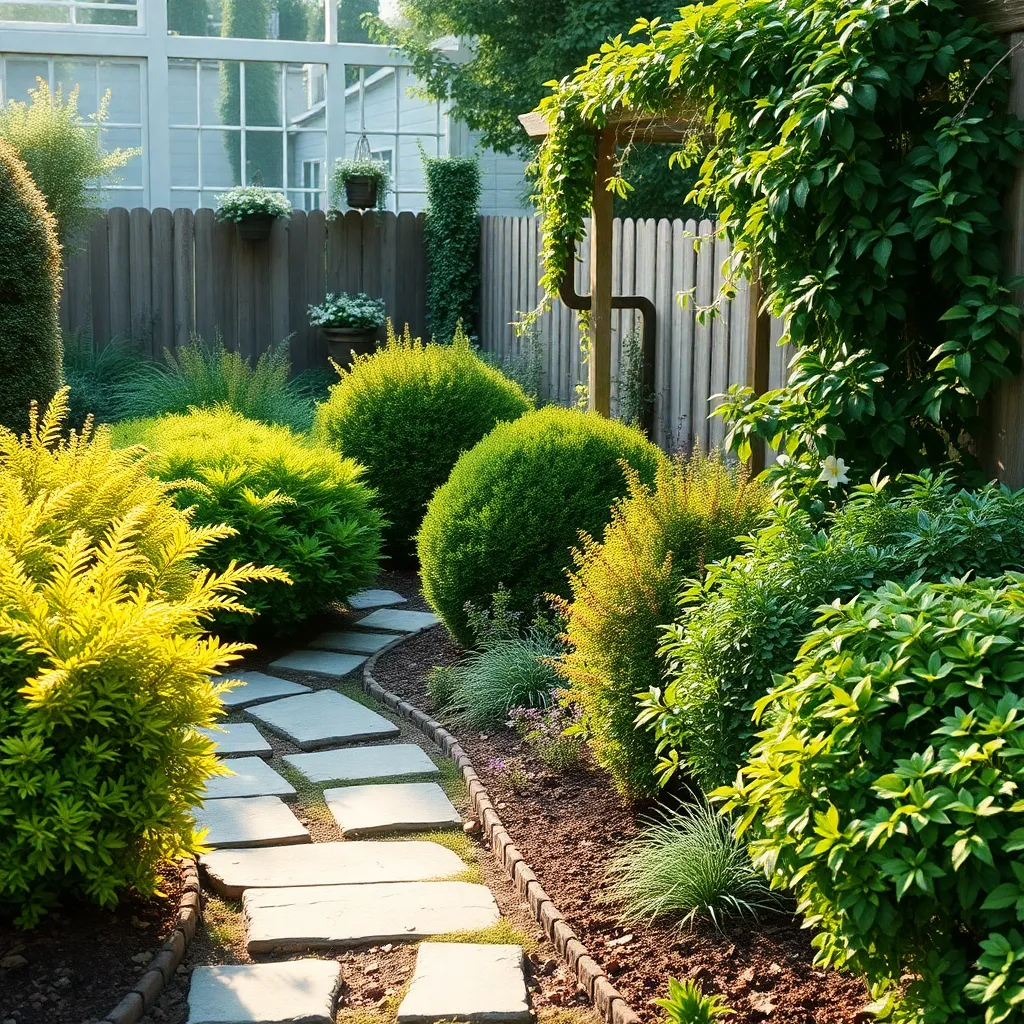
Incorporating low-maintenance shrubs into your small front yard can add beauty and structure without requiring constant care. Consider planting boxwood, which thrives in full sun or partial shade and requires moderate watering once established.
For a burst of color, hydrangeas are an excellent choice, offering vibrant blooms with minimal effort. They prefer partial shade and well-draining soil, and they only need deep watering during dry spells.
Another great option is the juniper shrub, which is tolerant of a variety of soil types and requires little more than occasional pruning to maintain shape. Its evergreen foliage provides year-round interest, and it can withstand both drought and frost, making it extremely versatile.
When planting shrubs, ensure you dig a hole twice as wide and as deep as the root ball to give them a solid start. Applying a layer of mulch around the base helps retain moisture and keeps weeds at bay, reducing your maintenance tasks further.
Add a Compact Water Feature
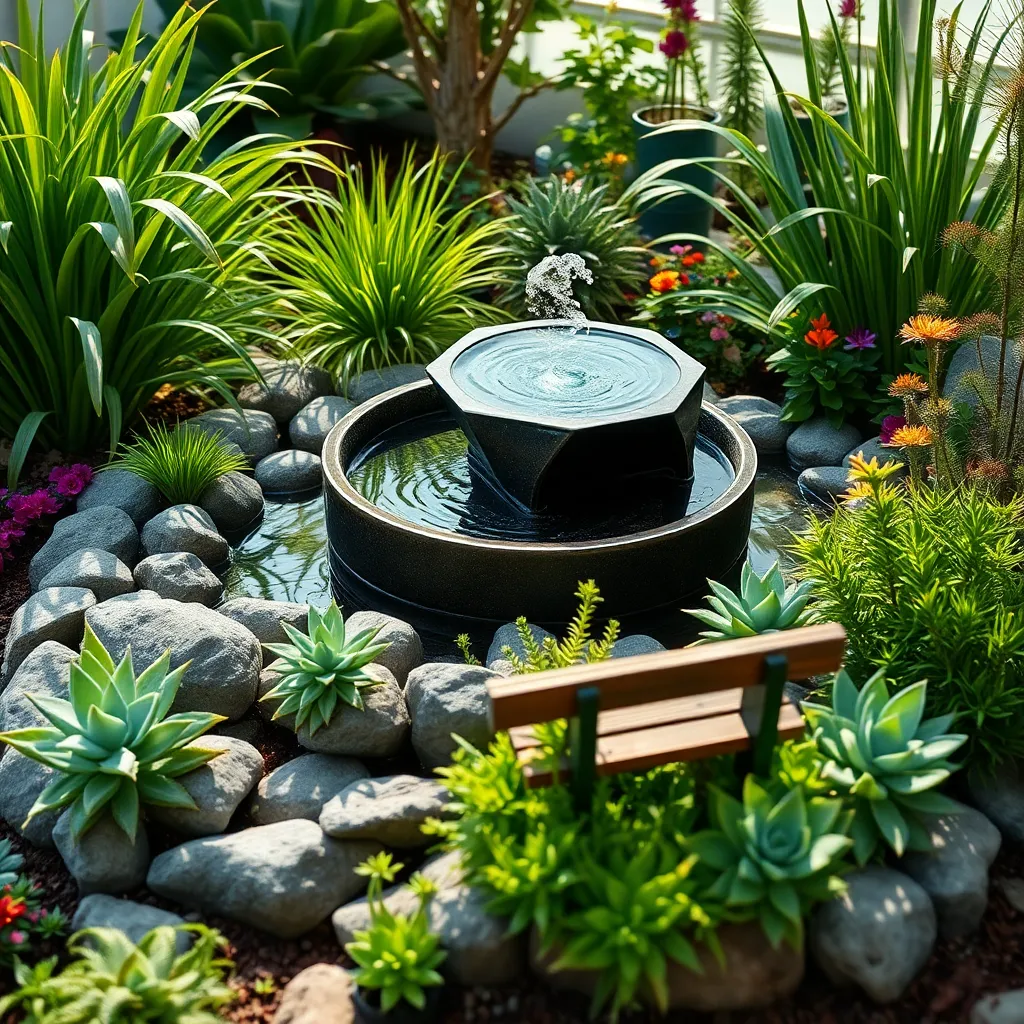
Integrating a compact water feature into your front yard can transform the space into a serene oasis. Even in small areas, a well-placed fountain or a bubbling rock can add a soothing sound and visual interest. Consider solar-powered fountains for an eco-friendly option that eliminates the need for electrical work. This type of feature can be easily installed and requires minimal upkeep.
It’s important to place your water feature where it can be easily accessed for maintenance but still serves as a focal point. Avoid placing it under large trees to minimize debris accumulation, which can affect water quality and pump function. For a visually appealing setup, surround your water feature with shade-tolerant plants like hostas or ferns. These plants not only soften the edges but also thrive in the slightly moist conditions created by the water feature.
Regular maintenance will keep your water feature looking its best. Check the water level frequently, especially during hot weather, and top it up to ensure the pump operates efficiently. Moreover, clean the pump and any filters regularly to prevent clogging from algae or debris. For a touch of visual interest, consider adding accent stones or small, colorful pebbles around the base.
Advanced gardeners might consider integrating a small pond or aquatic plants to further enhance the feature. Plants like water lilies or lotus can add beauty and help maintain water clarity by absorbing nutrients that would otherwise feed algae. Remember, it’s crucial to research and select plants appropriate for your climate and the size of your water feature. This thoughtful addition will not only improve your garden’s aesthetics but also create a calming atmosphere that beckons you to enjoy the outdoors.
Integrate Edible Landscaping Elements
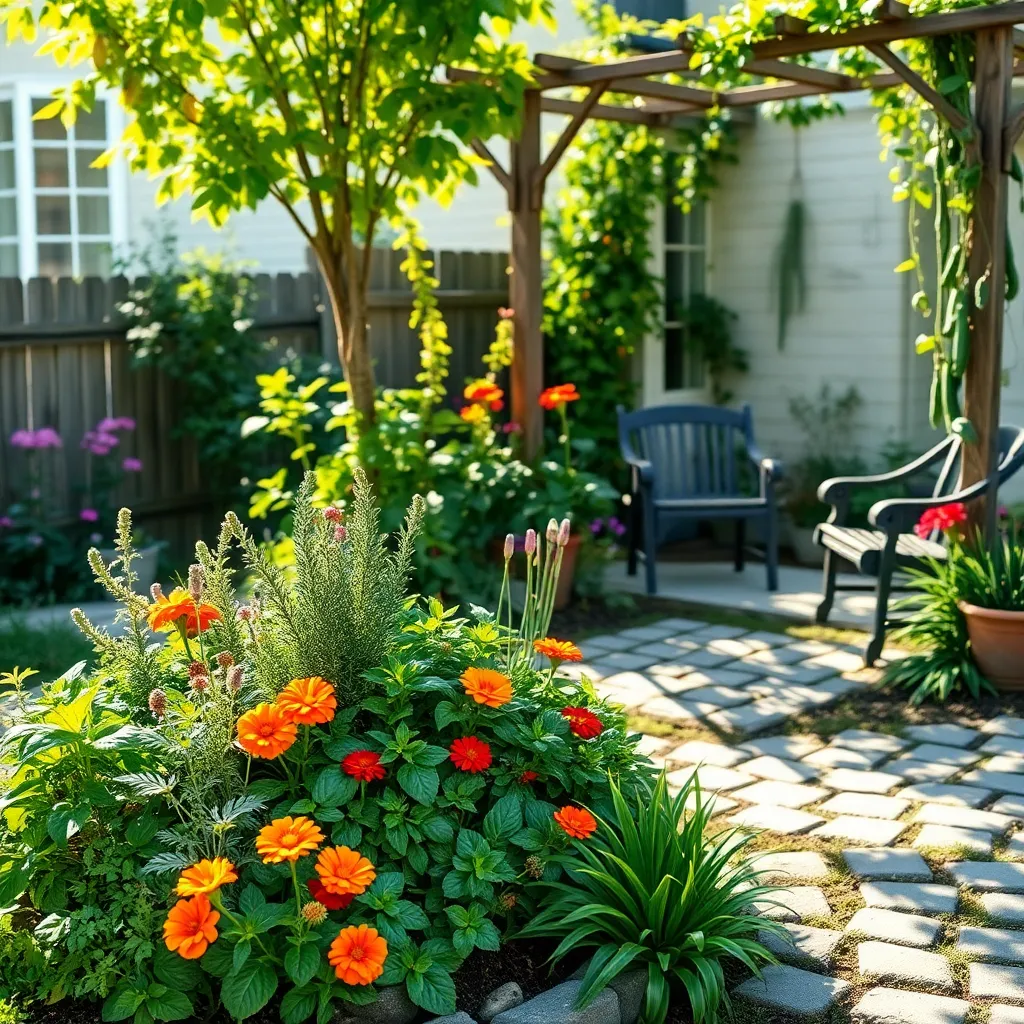
Transforming your front yard into an edible landscape can add beauty and functionality to your space. Consider incorporating fruit-bearing shrubs like blueberries or dwarf apple trees, which offer both aesthetic appeal and a tasty harvest.
To ensure your plants thrive, it’s essential to match them with the right growing conditions. Blueberries prefer acidic soil, so consider amending your garden bed with peat moss or sulfur to achieve a pH between 4.5 and 5.5.
Vegetables like kale and Swiss chard can also be integrated into your landscape for a vibrant, edible display. These leafy greens are not only visually appealing but are also easy to grow and maintain, requiring just 6–8 hours of sunlight and regular watering.
For advanced gardeners, consider creating a vertical garden with climbing plants like pole beans or sugar snap peas. These plants can be supported by trellises, maximizing your small space while providing a lush, green backdrop.
Opt for Dwarf Tree Varieties
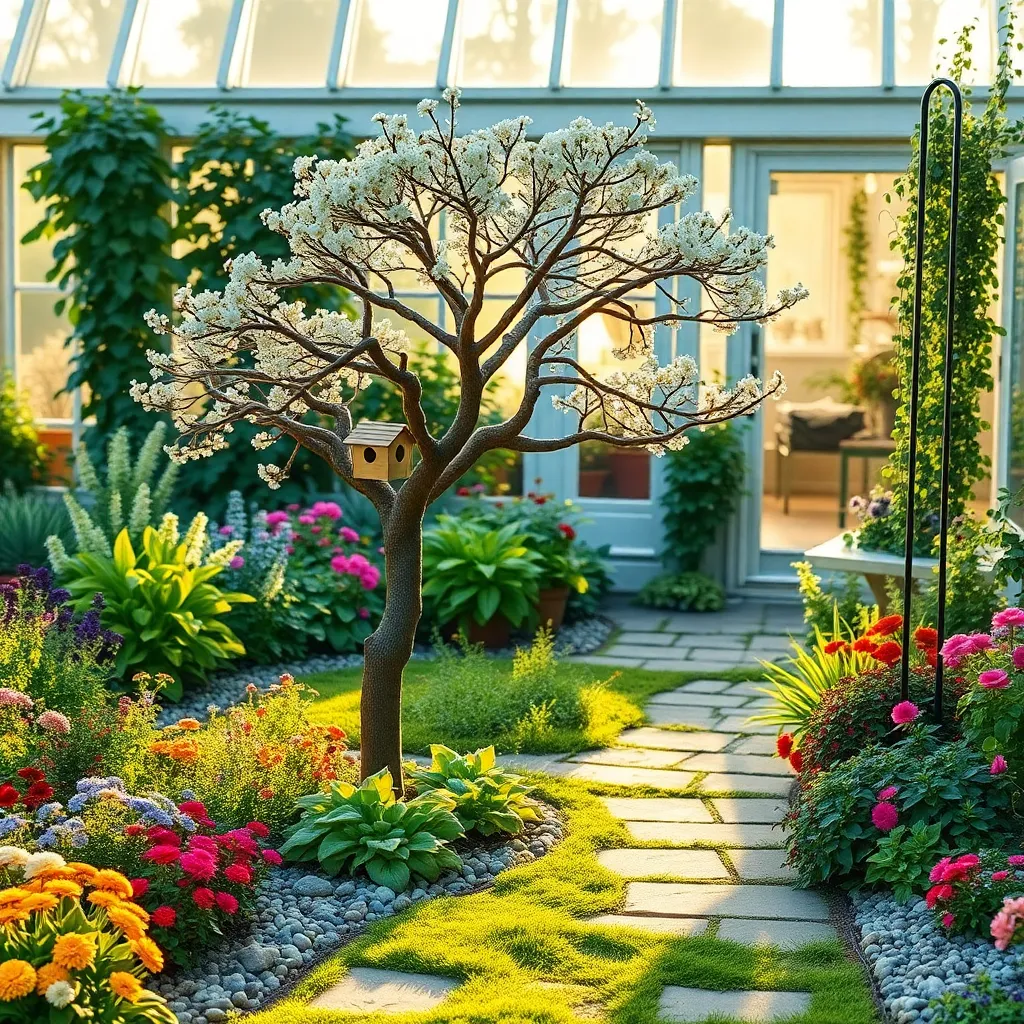
Incorporating dwarf tree varieties into your small-space front yard can transform it into a charming and manageable retreat. These compact trees not only fit snugly into limited spaces but also offer a touch of greenery and elegance without overwhelming your landscape.
Choose dwarf trees like the Japanese Maple or Dwarf Alberta Spruce, which thrive in small gardens. These trees are perfect for adding height and texture without taking up too much ground space.
For planting, ensure you use well-draining soil to prevent root rot, a common issue with container-grown trees. Mixing in some organic compost can enhance soil fertility, providing the nutrients necessary for healthy growth.
Watering is crucial for the success of dwarf trees, especially during the first few years. Regularly check the moisture level of the soil and aim to keep it consistently damp but not waterlogged.
Pruning is another essential practice, helping maintain the desired size and shape of your tree. Trim during the dormant season to encourage new growth and ensure your tree remains healthy and vibrant year-round.
Create a Cozy Seating Nook
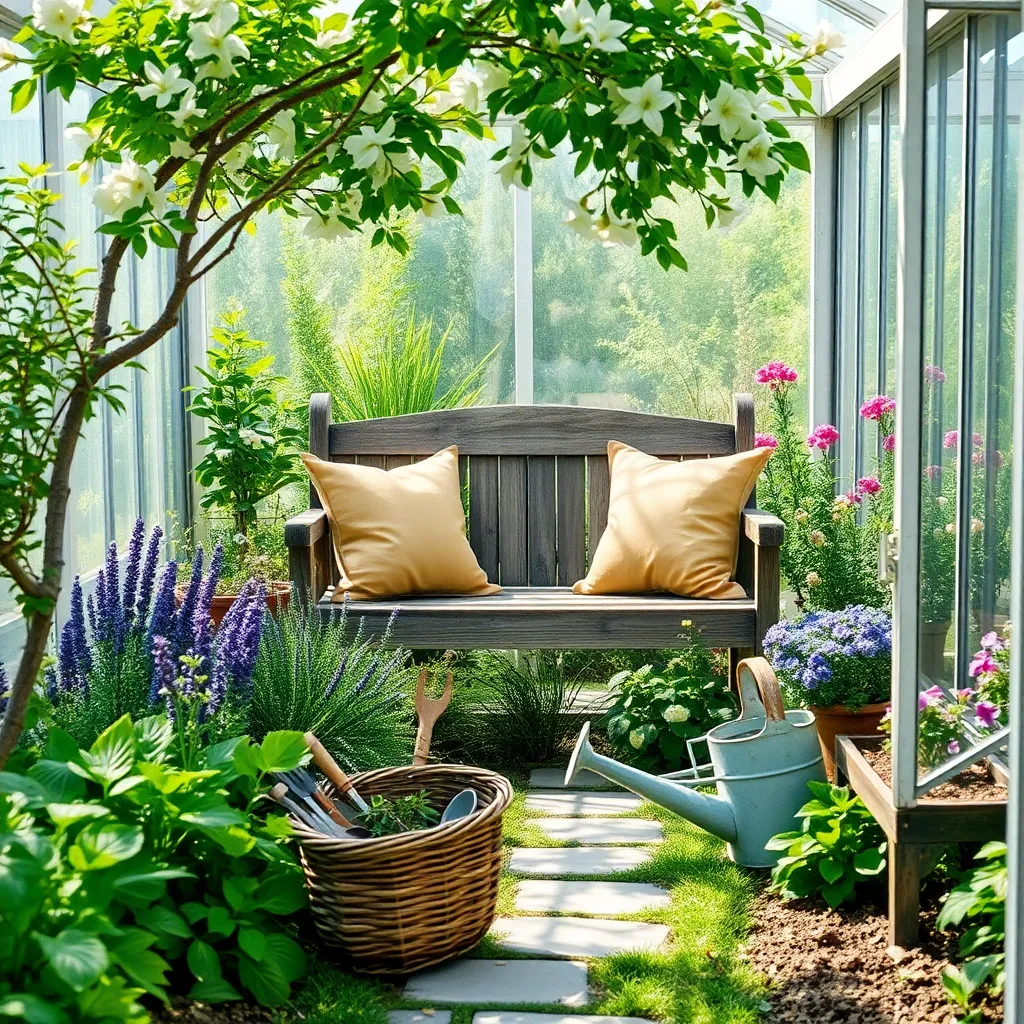
Creating a cozy seating nook in your small front yard can transform the space into a welcoming retreat. Choose a spot that receives a mix of sunlight and shade throughout the day to ensure comfort during different times.
Select furniture that is both functional and weather-resistant, such as wrought iron or treated wood. To enhance the intimate feel, surround your seating area with potted plants like lavender or rosemary, which also add a pleasant fragrance.
Consider adding a small water feature, such as a tabletop fountain, to create a soothing ambiance. The gentle sound of water can mask street noise, making the space feel more secluded and serene.
Incorporate vertical elements like a trellis or hanging planters to maximize your space without overcrowding it. Growing climbing plants like clematis or sweet peas on the trellis can provide privacy and a splash of color.
Use Pavers for Defined Paths
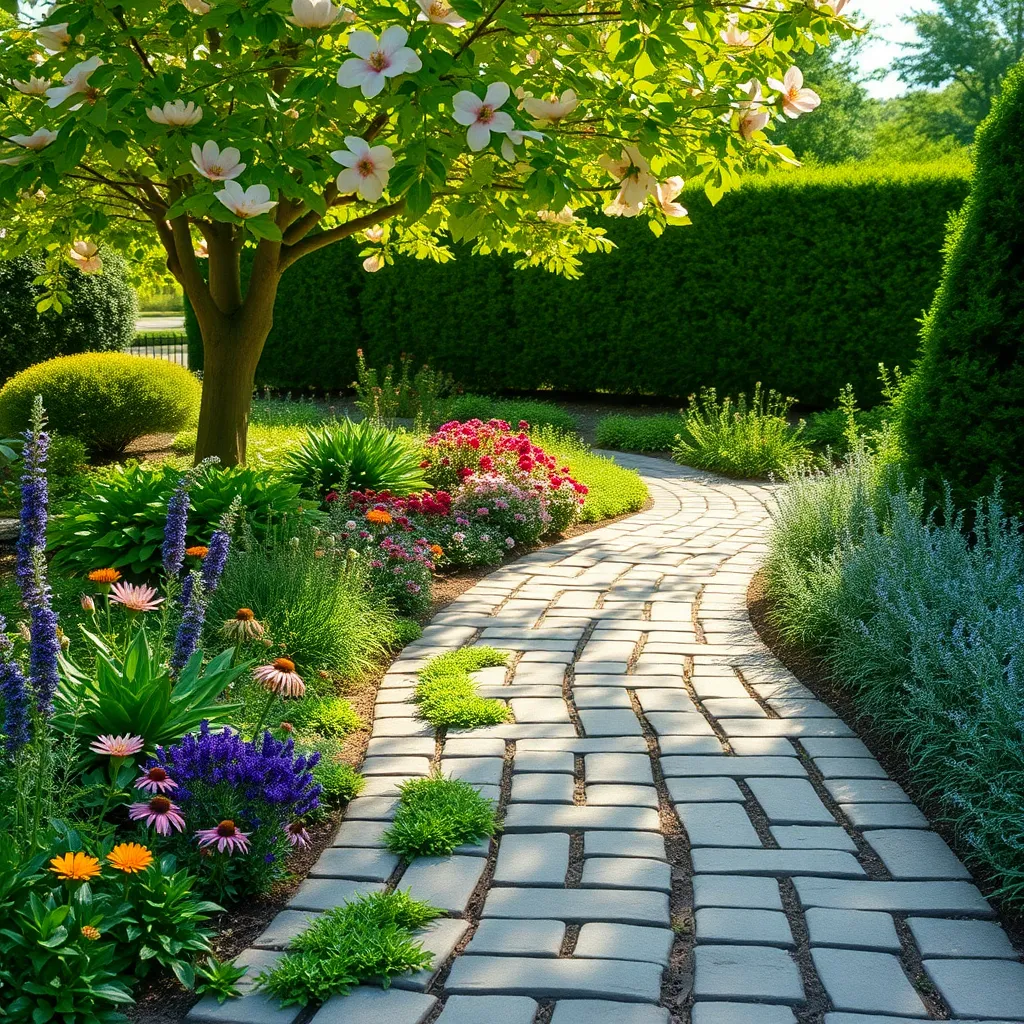
Transforming your small front yard with pavers can create beautifully defined paths that guide visitors through your space. Not only do pavers provide a clean and organized look, but they also help prevent soil compaction and erosion, ensuring your plants thrive.
Start by choosing pavers that complement your home’s architecture and the existing landscape. Opt for materials like brick, stone, or concrete to suit your aesthetic preferences and to ensure durability.
When laying pavers, it’s crucial to prepare the ground by leveling it and adding a layer of sand to stabilize the base. This step helps prevent future shifting and ensures the path remains even and safe for walking.
For a more dynamic look, consider alternating the direction or pattern of the pavers. This can add visual interest and break up the monotony of straight lines, especially in smaller spaces.
Install Smart Lighting Solutions
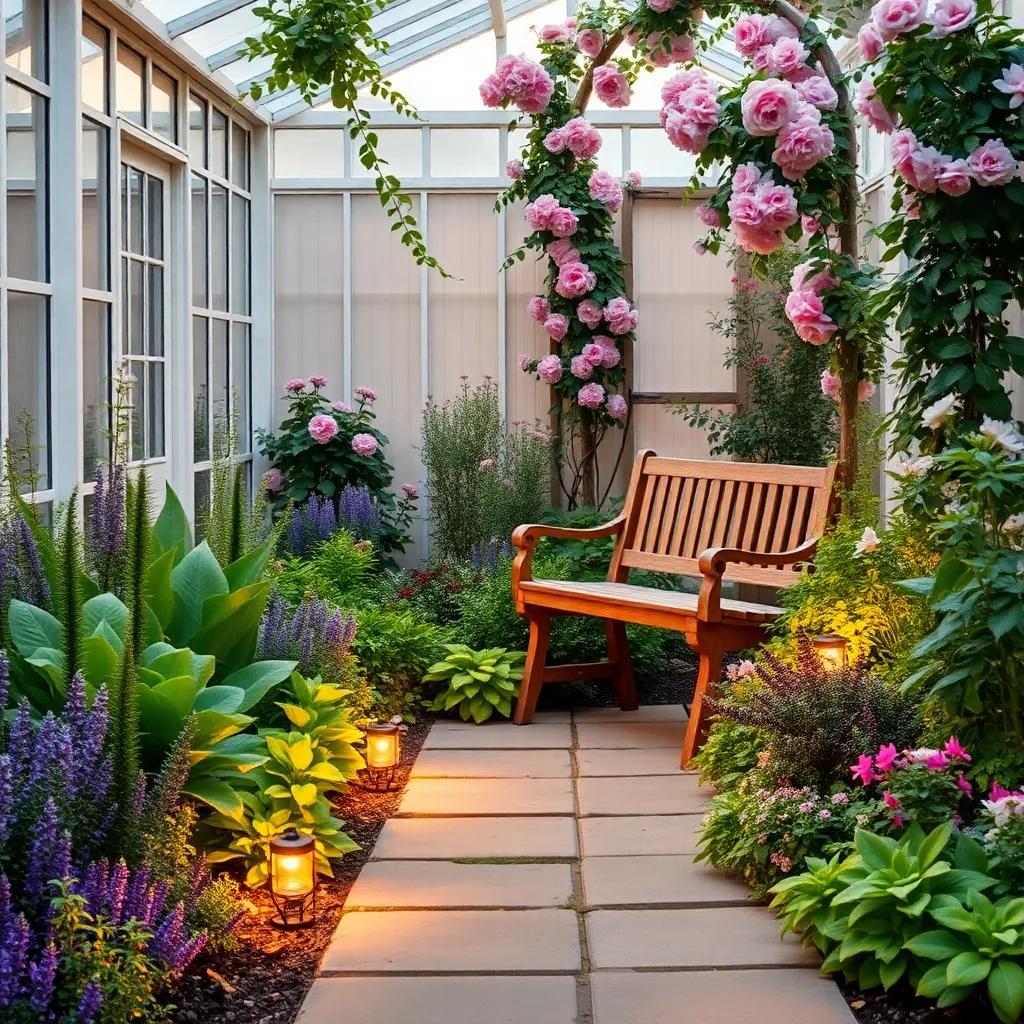
Enhancing your small-space front yard with smart lighting solutions not only boosts its aesthetic appeal but also increases safety. Installing solar-powered LED lights along pathways can be a sustainable option, as these lights are energy-efficient and require minimal maintenance.
Consider using motion-sensor lights near entryways to deter unwanted visitors and provide convenience. These lights automatically turn on when movement is detected, ensuring that your yard is illuminated only when necessary, thus conserving energy.
Another practical idea is to use adjustable spotlights to highlight specific landscaping features, such as a small water fountain or a particularly beautiful shrub. These spotlights can be directed to focus on different areas, offering flexibility in how you showcase your garden’s best attributes.
Advanced gardeners might explore integrating a smart lighting system that can be controlled via a smartphone app. This allows you to adjust lighting schedules and brightness levels remotely, ensuring that your yard is always perfectly lit to your preferences.
Conclusion: Growing Success with These Plants
In exploring the ’10 Small-Space Front Yard Landscaping Ideas,’ we’ve uncovered transformative ways to enhance your home’s curb appeal while nurturing your relationship with nature and your surroundings. From vertical gardens that lift spirits and save space, to charming pathways that invite connection, each idea serves as a metaphor for nurturing and cultivating our interpersonal relationships. We’ve also discussed the power of strategic lighting to illuminate both your garden and your shared moments, and the importance of layered plantings to add depth and resilience, much like a strong relationship.
Now, it’s time for you to take action. Choose one idea and implement it this weekend—it’s a small step that can make a big difference. As you embark on this journey, remember to save or bookmark this article for future inspiration and guidance. With every seed planted and every flower nurtured, you’re also sowing seeds of understanding and growth in your relationships. Here’s to flourishing connections and vibrant futures. Together, let’s cultivate spaces and relationships that are both beautiful and enduring.

